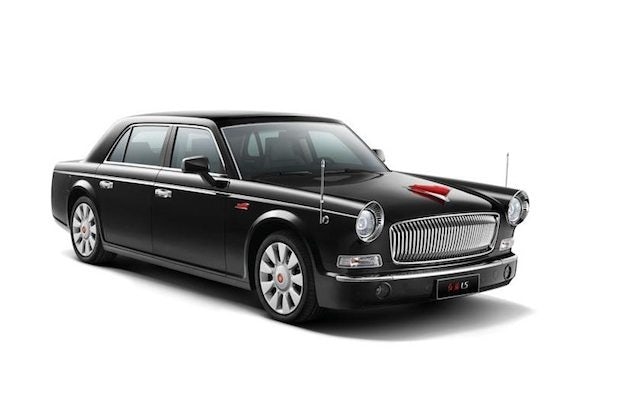
The Hongqi (Red Flag) L5 model that sold for over $800,000.
Last weekend, Chinese luxury auto brand Hongqi (Red Flag) reached a landmark moment when it announced at the Beijing Auto Show this weekend that it has sold its first L5 model for a record 5 million yuan (US$803,300)—the price of a Ferrari FF in China—to a buyer in Nanjing. While the announcement of a sale may not seem like a big deal, the high price signifies a confidence in shifting attitudes toward Chinese luxury brands that have long struggled to compete against foreign companies.
While the phrase “made in China” has often connoted stereotypes of “cheap” or “low-quality” products, attitudes about Chinese brands are changing quickly. However, Chinese luxury brands face many challenges when it comes to shedding preconceptions about their quality—especially if they’re trying to market to an international audience. A new article on Chinese-language shoe industry news site CNXZ discusses what it’s going to take for Chinese luxury brands to boost their images to consumers with preconceived notions of the superiority of non-Chinese brands.
According to the article, Chinese brands face a “stigma of low quality, mass production, low price, imitation, and counterfeits.” However, it argues that problems with perceptions about Chinese luxury brands are due more to their branding than the actual products they offer.
Building a successful brand requires funding and the mindfulness of a craftsman. Among those requirements, store operation has always been one of Chinese luxury brands’ weaknesses, for there are details beyond the products themselves to be taken care of, such as atmosphere and service that need to come from the accumulation of long-term experience. Store operation is likely to remain a challenge for domestic brands, since first- to third-tier cities are now the turf of leading international brands.
With branding focused on Chinese heritage and tradition, Chinese brands can gain an edge over foreign competition. In order to both appeal to the domestic market and have a global impact, items need to have both high-quality craftsmanship and branding that shows off their identity and history:
China has to incorporate traditional culture into branding and increase brand credibility. Luxury brands are the fruits of history, culture, art, and craftsmanship, and it requires time to precipitate a brand’s uniqueness. Currently, Chinese luxury brands typically choose to trace back to cultural roots. Categories such as liquor, tea, and jade use history and origins as selling points domestically, but those will not suffice when it comes to breaking into the international market. Only Chinese products incorporating fine craftsmanship and cultural essence can go far; Franz [porcelains] from Jingdezhen is a good case in point.
The article argues that brands associated with China such as “Chinese liquor, cigarettes, tea, porcelains, furniture, and crafts” have the best chance of international success over categories like cars and jewelry (a statement Hongqi or Qeelin would likely disagree with). However, it does note that Taiwan label Shiatzy Chen and Hermès-owned Chinese luxury brand Shang Xia have done well in the fashion sphere by touting their Chinese heritage. Thanks to companies like these, the transition in attitudes about Chinese luxury brands from "made in China" to "designed in China" is on its way. “Although the Chinese luxury industry remains young, it is now likely already on the road to a more mature status,” says the article.
Translation by Jasmine Lu.